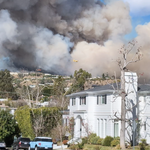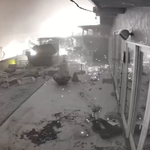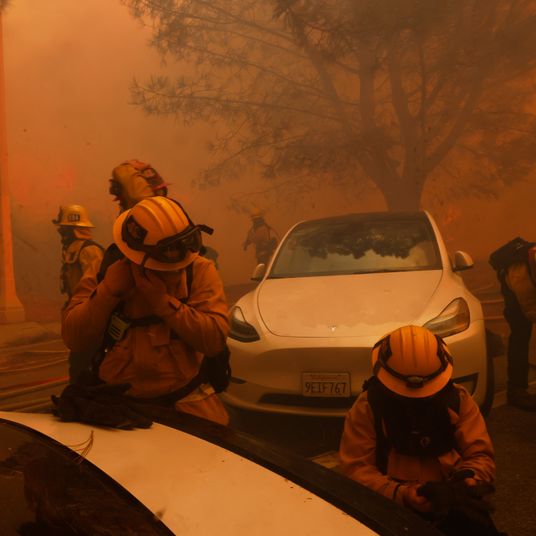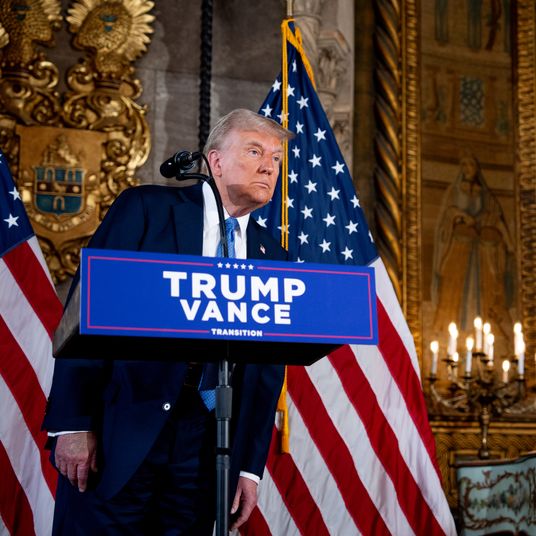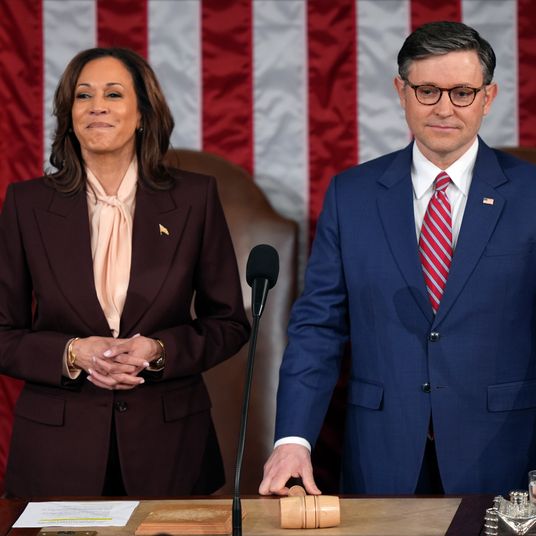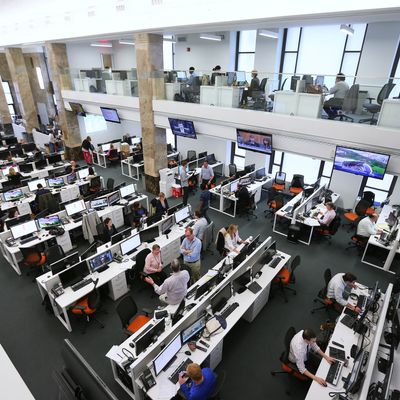
The modern realities of the media business have so accustomed us to seeing journalistic entities disbanded, either abruptly or in slow motion, that there’s an undeniable fascination in watching a giant news outlet come together in a matter of months. It feels something like witnessing the birth of a unicorn: staggering, illusory.
Just such a beast has been coming to life inside the Manhattan Center, which is located in the same building that houses the New Yorker Hotel in midtown Manhattan*, where Al Jazeera America — arguably the biggest American TV-news launch since Fox News and MSNBC more than a decade ago — is building its global nerve center. The nascent network bought its way into the U.S. market in January when its parent entity, the Middle East broadcast titan Al Jazeera, acquired Current TV, the struggling news channel co-founded by Al Gore in 2005, for a reported $500 million. As a result, Al Jazeera America will replace Current in 49 million households come August 20.
With deep pockets and an international, if at times contentious, renown, the new network is poised to become a disruptive force in an industry that’s navigating reinvention. And yet Al Jazeera America’s mission seems utterly Herculean: to build from scratch an audience that can compete with the standard-bearers of cable news, while at the same time warming Americans to the idea of consuming journalism bankrolled by a Persian Gulf monarchy.
The project has raised its profile recently by recruiting alumni of a network it will closely compete with. On July 1, Al Jazeera America announced it was teaming up with the new production company of Soledad O’Brien, who’d exited CNN’s morning-anchor chair a few months earlier. She will serve as a “special correspondent,” contributing stand-alone documentaries and shorter news segments for a flagship 9 p.m. prime-time show called America Tonight. In March, Ali Velshi was poached from CNN to host a nightly business program. All it took to convince him was a propitious lunch with Ehab Al Shihabi, Al Jazeera’s charismatic executive director for international operations and the man overseeing the launch. “I just knew” it was the right move, Velshi tells me.
The wooing of name-brand journalists has been but one step in the mammoth undertaking that is the making of Al Jazeera America. That the channel even exists (almost) suggests a whiff of insurgency in the cable news business. But its creation is also a story about an assiduous experiment in organization-building — one that executives say is going swimmingly.
“We’re well ready now, fully on target,” says Paul Eedle when I visit the channel’s digs on a recent Thursday morning. Eedle, 56, a gregarious Brit with a slight stature and rosy complexion, wearing wire-rim glasses and a tan suit made by his tailor in Doha, is one of several honchos from Al Jazeera English (another offshoot of the flagship) who’ve been temporarily imported to New York to oversee the launch. Today is the first time an outside reporter is getting a tour of the command center. For an outlet that Eedle repeatedly refers to as “an American channel for an American audience” (lest anyone mistake it for its Arabic-language sibling, which was once accused of promoting Osama bin Laden propaganda), it’s fitting to share a building with New Yorker, a 43-story Art Deco monolith near Penn Station.
The cavernous TV studio was once a jazz club called the Terrace Room that hosted the likes of Glenn Miller and Benny Goodman. Before Al Jazeera America moved in on May 15, MTV had used the space to film a show called Girl Code. The nearby newsroom, bright and open with enviably large windows, is situated in a part of the building that was once a bank, a legacy betrayed by sleek marble columns propping up the 26-foot ceiling. “This was all a shell,” says Eedle, motioning toward the 100 desks, 150 computers, and 24 flat-screen TVs that have been installed in the 4,300-square-foot bull pen, which is equipped for 200 employees.
Eedle is making his way to a control room to watch a live practice run. Lately there have been as many as fifteen such rehearsals daily, and each one is carefully critiqued. Al Jazeera America’s strategy for distinguishing itself from competitors is to eschew punditry and partisanship on the one hand, and tabloid-style infotainment on the other, while focusing instead on hard-hitting national and international news that matters to Americans. Today’s ersatz bulletin reflects this mix. There are stories on Edward Snowden, George Zimmerman, and the abortion-bill standoff in Texas. One segment is being broadcast from the streets of Brazil; another from Pretoria, South Africa, where a reporter is embedded with the press scrum covering Nelson Mandela. “I think it’s going pretty well,” Eedle whispers.
Still, there’s an air of skepticism hanging over the launch. In May, Christopher Dickey wrote in Newsweek that Al Jazeera America “could transform the way we see news and the way we think about it. But, then again, it could be a disaster in almost every sense of the word.” In a recent Toronto Star column, former Al Jazeera English chief Tony Burman questioned Al Jazeera America’s independence from its patrons in Qatar, which backs the larger enterprise. He also has doubts about Al Jazeera America’s, well, Americanism. “Al Jazeera seems to be making compromises, probably to placate the cable and satellite companies,” Burman, who left the broadcaster in 2011, tells me. “If you live in Washington, or L.A., or Chicago, or any city for that matter, why would you turn on Al Jazeera? You’d turn it on because, like the BBC, it could help Americans get a window on the world that otherwise wouldn’t be available to them.” Will Americans watch a version of Al Jazeera that provides a window into their own world? “Of course they won’t,” says Burman. “Will American cable and satellite companies continue to keep it on the air if Americans don’t watch? Of course not. I hope I’m wrong.”
At the start, Al Jazeera America’s penetration will be a drop in the bucket compared to the likes of CNN, Fox News, and MSNBC. So far, it has distribution deals with Comcast, DirectTV, DISH Network, Verizon FiOS, and AT&T. But carriers like Cablevision and Time Warner Cable are up in the air. Time Warner is that rare provider that actually distributes Al Jazeera English, but only in the New York area. It dropped the low-rated Current TV after the sale to Al Jazeera, but a Time Warner Cable spokesperson confirmed the company is “in discussions” to pick up Al Jazeera America, which is aiming to cover costs through a combination of carriage fees and ad revenue. For some context, CNN is available in 100 million U.S. households, more than double the number that will have access to its new competitor.
Al Jazeera America wouldn’t specify how much it’s been spending, but the $500 million Current TV deal marked the beginnings of an expensive launch phase that was ramping up even before the final papers were signed. Last December, as negotiations were picking up steam, Al Jazeera began retaining big-name firms to work on the new venture: Siegel + Gale to handle branding, Qorvis Communications for media strategy, and DLA Piper on the legal side.
On December 20, representatives from these groups arrived at Al Jazeera’s global headquarters in Doha for an all-day meeting with Ahmed bin Jassim Al Thani, the driving force behind the Current TV purchase and Al Jazeera’s director general at the time. After receiving Al Thani’s blessing, the consultants worked “literally round the clock,” as someone who was involved put it, to be ready for an early-January close. There were lots of seventeen-hour days at DLA’s headquarters in Manhattan and Washington. Day trips to the New York office turned into overnights. On January 2, the evening they finally sealed the deal, they celebrated in restrained fashion with a round of cupcakes. “A little bit of sugar seemed like a good idea,” said a person who was there.
Over the next few weeks, the launch team snowballed from around 20 to 40, including Eedle and other senior Al Jazeera personnel, as well as staffers from Current. On inauguration weekend, the whole group checked into the Hyatt in Cambridge, Maryland, overlooking the Chesapeake Bay, for a two-day retreat where they dug into the audacious project of figuring out exactly what this new network would look like: Where should Al Jazeera America’s twelve bureaus be located? (Places like Detroit, New Orleans, and Nashville; “We were looking for heartland locations,” says Eedle). Where should the broadcast centers be? (New York, L.A., D.C.) What would the head count be in New York? (288, so far.) In Washington? (51 as of press time.) And so on. “We were very excited that we’d made the plan, but we were also very daunted,” says Eedle.
The most daunting part, however, was yet to come. It involved sorting through the 21,000 résumés that Al Jazeera America received for 400 open newsroom positions. A team of more than a dozen people attacked the pile with the help of a software program called Resumator. Higher profile prospects were scouted through their agents. Aside from Velshi and O’Brien, other top recruits include Ed Pound, a veteran investigative journalist; Bob Wheelock, a longtime former ABC News producer; and Kim Bondy, a former executive producer and vice-president at CNN. “I like to build things,” Bondy tells me.
As of earlier this week, the channel had made 689 hires (approximately 200 Current employees, including some 50 in editorial, have been absorbed by the new operation), although there are at least two key positions left to fill: president and CEO. Erstwhile TV news executives like Jon Klein, Mark Whitaker, and David Westin have been floated as possible contenders for the president role, but a spokesman for the network declined to discuss the search, and several well-placed sources pleaded ignorance when I asked about its progress. Whoever it is will be responsible for shaping programming like America Tonight, which will go head-to-head with Piers Morgan, Rachel Maddow, and Sean Hannity; Velshi’s daily business show, Real Money, which he says will focus on “the impact of daily gyrations in the economy on regular people”; and a U.S. version of The Stream, an Al Jazeera English show that enables viewers to interact with its hosts via social media. Eedle points out that Al Jazeera America will have live programming at all hours, including half-hour news bulletins at two or three in the morning when the other cable networks are in tape. “News breaks at those hours, and we will be on it,” he says.
Whether anyone will be watching is another matter. If there’s anything to be learned from Current TV, it’s that big-name talent hardly guarantees success. (Keith Olbermann didn’t exactly set Current’s ratings ablaze.) Having nosebleed seats on the cable dial certainly won’t help, either. In New York, to cite just one major market, Al Jazeera inherits channel 107 on Comcast, 189 on AT&T, 192 on Verizon FiOS, 215 on DISH, and 358 on DirecTV.
Al Shihabi, the launch guru, doesn’t seem concerned about attracting viewers. On a recent Friday morning at the Aspen Ideas Festival in Colorado, he gave a live interview to NPR’s Kai Ryssdal about “Al Jazeera’s Big U.S. Play.” It was a bleary-eyed 8 a.m. session, but Al Shihabi looked sharp in a crisp black suit and white dress shirt with no tie. Why would a foreign interloper want anything to do with the “cannibalistic and opinionated and right and left and in some ways completely bonkers” American cable news environment, Ryssdal wanted to know? Al Shihabi’s answer was simple: to give viewers something else. He cited research claiming there are 50 million Americans who crave the type of of serious, fact-based, opinion-, and fluff-free TV news that Al Jazeera America is setting out to create. “The demand exists,” he said. If that’s true, all he and his hundreds of new employees have to do is satisfy it.
* An earlier version of this article incorrectly stated that Al Jazeera America is located inside The New Yorker Hotel. The network is located inside the same building as the hotel, but the Manhattan Center is providing the actual facilities.


